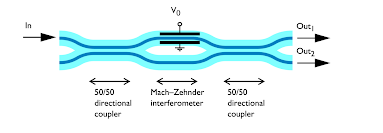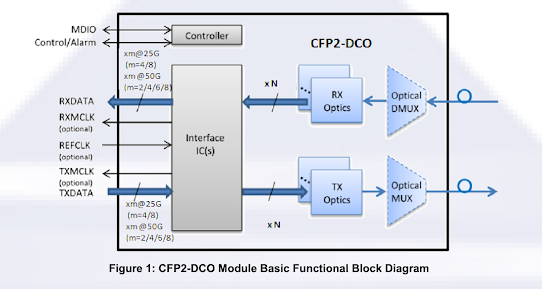Mach–Zehnder Modulator
Mach–Zehnder Modulator
Optical modulators are used for electrically controlling the output amplitude or the phase
of the light wave passing through the device. To reduce the device size and the driving
voltage, waveguide-based modulators are used for communication applications.
To control the optical properties with an external electric signal, the electro-optic effect,
or Pockels effect, is used, where the birefringence of the crystal changes proportionally to
the applied electric field. A refractive index change results in a change of the phase of the
wave passing through the crystal. If you combine two waves with different phase change,
you can interferometrically get an amplitude modulation.
The device in Figure 1 is a Mach–Zehnder modulator. The input wave is launched into a
directional coupler. The power of the input is split equally into the two output waveguides
of the first directional coupler. Those two waveguides form the two arms of a Mach–
Zehnder interferometer. On one of the arms, you can apply an electric field to modify the
refractive index in the material and, thus, modify the phase for the wave propagating
through that arm. The two waves are then combined into another 50/50 directional
coupler. By changing the applied voltage you can continuously control the amount of light exiting from the two output waveguides.
A common material for fabricating waveguide modulators is lithium niobate, LiNbO 3.Lithium niobate is a ferroelectric crystal that exhibits uniaxial birefringence. Waveguide structures can be fabricated by either indiffusion of Ti into the core regions or by annealed proton exchange, where lithium ions are exchanged with protons from an acid bath.
Reference link:
https://www.comsol.com/model/mach-8211-zehnder-modulator-15061



Comments
Post a Comment